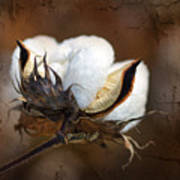Qiushuang Yao, Huihan Wang, Ze Zhang, Shizhe Qin, Lulu Ma, Xiangyu Chen, Hongyu Wang, Lu Wang, Xin Lv
Potassium (K) is a highly mobile nutrient element that continuously adjusts its demand strategy among and within cotton leaves through redistribution. This indirectly leads to variations in the leaf potassium content (LKC, %) at different leaf positions. However, owing to the interaction between light and leaf age, leaf sensitivity at different positions to this change varies, including the reflection and absorption of the spectrum. How to selecting the optimal monitoring leaf position is an important factor in quickly and accurately evaluation of cotton LKC using spectral remote sensing technology. Therefore, this study proposes a comprehensive multileaf position estimation model based on the vertical distribution characteristics of LKC from top to bottom. This is aimed at achieving an accurate estimation of cotton LKC and optimizing the strategy for selecting the monitored leaf position. Between 2020 and 2021, we collected hyperspectral imaging data of the main stem leaves at different positions from top to bottom (Li, i=1, 2, 3, ... , n), during the cotton budding, flowering, and boll setting stages. Vertical distribution characteristics, sensitivity differences, and spectral correlations of LKC at different leaf positions were investigated. Additionally, the optimal range of the dominant leaf position for monitoring was determined. Partial least squares regression (PLSR), random forest regression (RFR), support vector machine regression (SVR), and the entropy weight method (EWM) were used to establish LKC estimation models for single leaf and multileaf positions. The results showed a vertical heterogeneous distribution of cotton LKC, with LKC initially increasing and then gradually decreasing from top to bottom, and the average LKC of cotton reaches its maximum value at flowering stage. The upper leaf position demonstrated greater sensitivity to K and exhibited a stronger correlation with the spectrum. The selected dominant leaf positions for the three growth stages were L1–L5, L1–L4, and L1–L2, respectively. Based on the dominant leaf position monitoring range, the optimal single leaf position models for estimating LKC during the three growth stages were PLSR-L4, PLSR-L1, and SVR-L2, with The coefficient of determination of the validation set (R2val) of 0.786, 0.580, and 0.768, and the root-mean-square error of the validation set (RMSEval) of 0.168, 0.197, and 0.191, respectively. The multileaf position LKC estimation model was constructed by EWM with R2val of 0.887, 0.728, and 0.703, and RMSEval of 0.134, 0.172, and 0.209, respectively. In contrast, the newly developed multileaf position comprehensive estimation model yielded superior results, improving the stability of the model on the basis of high accuracy, especially during the budding and flowering stages. These findings hold significant importance for investigating cotton LKC spectral models and selecting suitable leaf positions for field monitoring.
